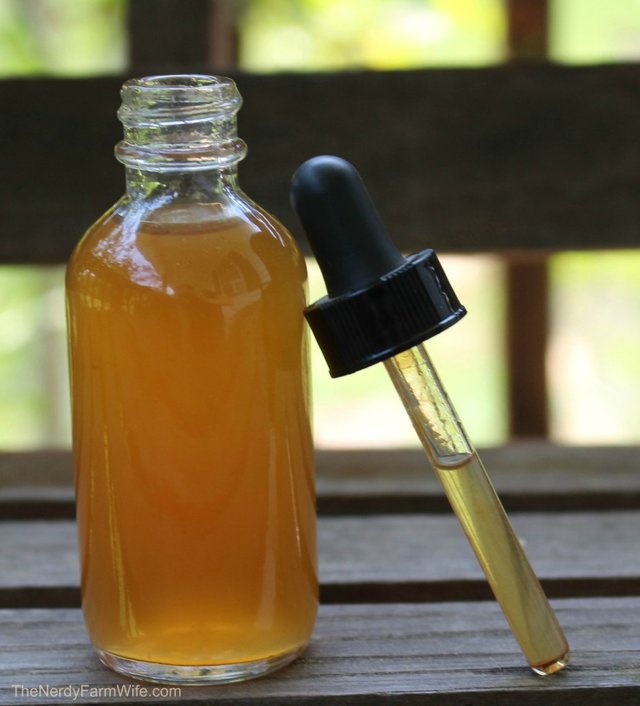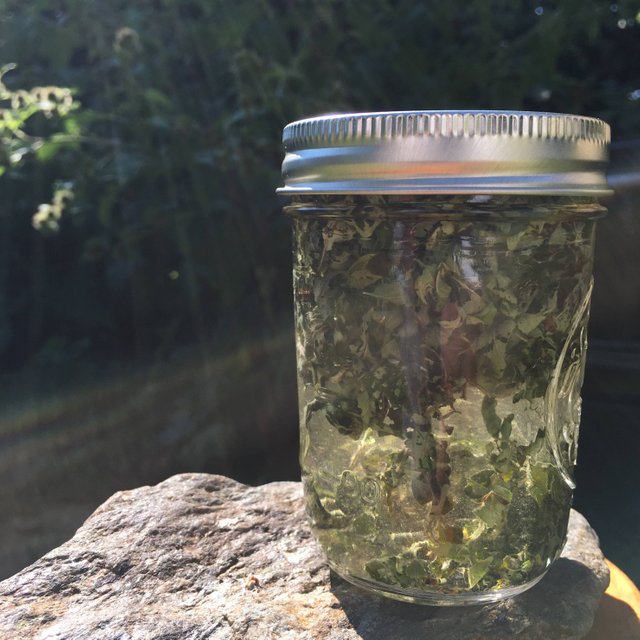My Journey Into Making Tinctures
Back To School
I had been gardening for 5 years when I decided to take a course in tincture and spirit making held at Tower Botanical Gardens by an herbalist named Guido Masé.
I was one of the few guys in a room full of pleasant giddy middle aged women.
From his book, The Wild Medicine Solution, herbalism started out as a way for people in power to create poisons and antedotes. The medicinal benefits were realized when those taking the antedotes noticed a lack of other issues related to colds, digestion, and energy levels.
Masé was a thin man in his early thirties with dredlocks and a careful manner. He presented us with one ounce bags of damiana, goldenrod, and some other herbs I can't remember.
The damiana tincture he presented is easy to make and Masé recommended using 80 proof (vodka) to 190 proof (grain alcohol) for an efficient extraction. For our class he used vodka and gave us the following instructions:

image source: thenerdyfarmwife.com
Damiana Tincture
- Add damiana leaves into a glass jar.
- Fill the jar with 80 proof vodka (or stronger alcohol).
- Shake the jar once every day for 30 days.
- Refill the jar if the leaves lower the level of alcohol.
- Strain out the leaves after 30 days. Transfer into a glass dropper bottle.
Here are my notes after making many types of tinctures over the last few years:
- Vodka will sweeten the tincture, grain alcohol will burn and be more like a strong mouthwash.
- The best place to administer the tincture is below the tounge.
- Making bitters with dandelion root, for example, and dropping the tincture on the tounge will taste horrible at first. But it will increase the taste bud receptors on your tounge. Allowing you to savor your meals that much more.
- Tincutres can be made with roots and even bark -- cherry tree bark helps with a sore throat -- but you may need to experiment with alcohols stronger than vodka for an efficient extraction.
- Distilling herbs or plant mass will result in making spirits, which can remain chemically equivalent to the original plant mass for over a hundred years. Masé had anecdotal evidence about this.
Masé passed around his damiana tincture and the flavor was a dark floral herb. He said it was often used as an afrodisiac.
Masé's second class delved MacGuyver style into how to use a copper pipe, a glass jar, alcohol, and part of a tincture bottle to make spirits. The process, which I tried at home, was hard for me to repeat. Masé successfully made spirits in class and gave everyone a bottle to take home. I sat at a table with a couple classmates and tried the spirits immediately.
At that point, I had never had spirits and was a bit overwhelmed by the experience. I could taste some of the flavor I got from the tincture, but the spirit flavor was light, sweet, and ever evolving into tastes and fragrances that grew more lovely.
In my next post , I will talk about my experience making herbal vape juice. I also want to try selling some bottles for STEEM.

Very cool. Do alcohol extractions work on most herbs? Or do you need to use other methods for certain plants? I wonder if some things are left out because they do not dissolve in alcohol.
It has worked on any herb leaf i've tried (sage, oregano, scarlett sage, creeping charlie, edelweiss, mint). It has worked well with some flowers (lavendar), most fruits (cranberries, dates), and seeds (vanilla, green coffee bean). It also works well with fruit peels (orange, lemon).
Some flowers are trickier and may be best as spirits, but i don't have as much experience with them. Masé also said you need higher proof alcohols with barks and roots.
From what I've read, cannabis buds should be decarbed first before using them for tinctures. Heating the buds to 310-400F will help preserve the terpenes while converting the THCa to THC. This applies to high THC strains and high CBD strains.